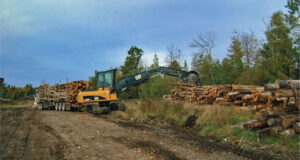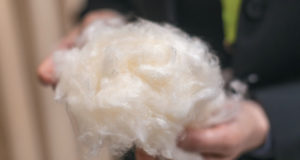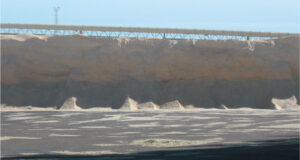
The problem of what to do with pulper rejects and sludge waste has always been with us. This waste is a mix of plastics and other typically non-recyclable materials (Fig. 1). It is very wet, difficult to handle, and presents a real issue. Until recently this material has been sent to third-party waste management companies for incineration. Such processes are inefficient, costly, and create a significant carbon footprint.
One critical point is that pulper rejects and paper sludge generated as waste in the papermaking process are discharged with high water content; although it may be partly dehydrated on site, it is still incinerated with a high moisture content (possibly 60 percent or more.) When incinerated, this means that extra fossil fuel energy is used for auxiliary combustion, not to mention the undesirable effects of excess exhaust gas emissions on the surrounding environment. How then to make this process environmentally friendly while reducing the cost to the papermaker?
THE OGUMA SOLUTION
The Oguma Pelletizer is the ideal, simple, and practical solution to a mill’s waste recycling needs. Removing the need to send pulper and sludge waste to landfill, the equipment compresses, consolidates, and dewaters even the worst grade waste into solid fuel pellets. These can be then used as feed for the boiler system. Tried and tested in the Japanese market, it has provided mills with a very cost-effective method of waste handling—safely eliminating landfill, third-party recycling, or incineration charges. It is the way forward for future recycling, putting the papermaker in control.
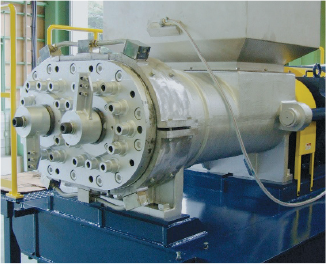
Oguma of Japan was established in 1951 and is renowned for its recovered fuel machinery. In 2007, the company made a breakthrough in waste recycling technology, due to the innovative talents of CEO Yasuo Oguma. The aim was to provide a machine that would consolidate and dewater the waste simultaneously, thus forming handleable pellets that could be used for refuse-derived fuel (RDF), leading to energy savings and reduced processing costs. This concept would allow the mill to process all of its previously non-recyclable waste at low cost and in an environmentally friendly way.
HOW THE PELLETIZER WORKS
The Oguma Pelletizer was the outcome of an intense three-year development program that investigated a whole range of potential solutions. It provides a truly robust, low maintenance solution to the needs of the papermaker. Figure 2 shows a typical installation. Easy to set up, the stainless-steel construction with its integrated hopper delivers a high throughput and facilitates easy removal of wastewater.
The pelletizer functions by compressing the waste material, simultaneously draining out the excess moisture. The equipment consists of two rotating screw extruder systems that channel the material into a compression zone. The unwanted moisture is expressed through vents underneath (see Fig. 3).
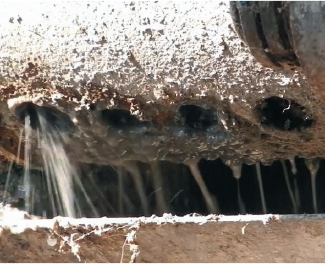
During the short compression and dewatering process, the starch and plastic components are melded and consolidated into solid pellets (Fig. 4). The pellets are then emitted from customized nozzles. They can then be transported for storage or immediate use as boiler feed. The original moisture content of the raw material (typically about 60 percent before processing) has been dehydrated and solidified to about 30 percent when the pellet is discharged.
As the solid matter after discharge retains heat (about 70° C) due to friction, the moisture content can be further reduced by natural drying using this residual heat. Importantly, waste with such a low water content reduces the cost of transportation and has good combustion efficiency. The graph (Fig. 5) clearly shows just how effectively the pelletizer compresses the waste into solidified, “highly saleable” pellets. Typical machine throughput for the SS-10 Pelletizer is in the region of 4.8 metric tpd and there is a range of power options to match with specific mill requirements.
BENEFIT CASE STUDY
A major Japanese paper company manufactures 12,000 metric tons of core base paper per month at one of its mills, with a clear mission of prosperous co-existence with the local community. Focusing on environmental issues such as waste, pollution, and noise reduction and the development of products with low environmental impact, the mill needed to address how to deal with pulper and screening waste, traditionally “incinerated” or sent to landfill.

This mill first purchased a machine in 2010 to produce solid fuel out of its waste more efficiently. However, due to frequent problems with this unit, stable production of solid fuel could not be achieved and repair costs were increasing yearly. In 2017, the mill decided to replace this machine with the Oguma Pelletizer, which has a robust design and very stable operation (Fig. 6).
A spokesman for the mill reports, “Our original machine had a heater system, but the Oguma Pelletizer does not require such a system. In addition, the throughput of the pelletizer is higher, while the running costs of the final drying system remain the same. This seems to be because the wastes discharged from the pelletizer have a temperature of around 70° C due to the heat generated by friction, which contributes to the energy savings.
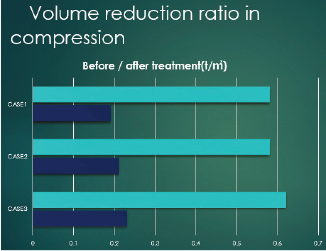
“Our experience shows that the Oguma Pelletizer is a highly productive, cost-efficient machine providing production stability and low maintenance costs,” he adds. According to this paper mill, energy costs reduced by about 50 percent after installation of the Oguma Pelletizer.
DESIGNED FOR LIFE
The Oguma Pelletizer employs a unique, tried and tested methodology, giving papermakers a real, yet simple alternative to current “environmentally unfriendly” practices to meet modern standards and environmental targets. Despite the pelletizer’s high output rate, general maintenance is only needed after 2,000 hours operating time.
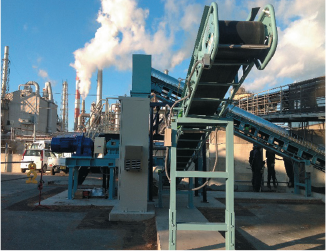
The machine is backed up with a solid performance warranty and Oguma will even pre-trial customer waste to ensure the machine is fine-tuned to the specific characteristics of a customer’s waste materials.
 Paper 360
Paper 360
